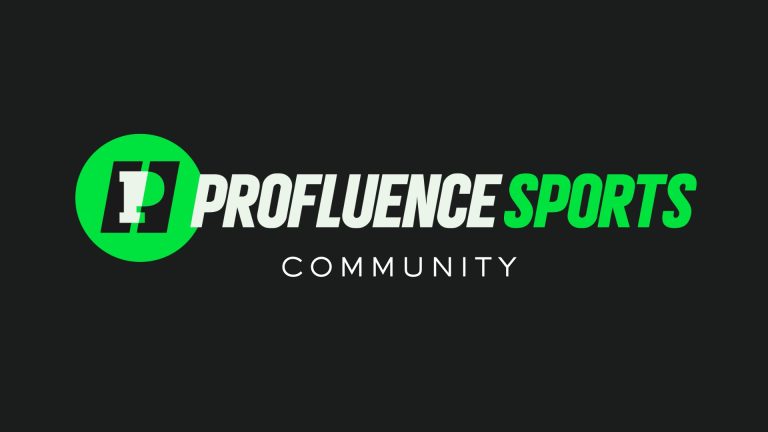Most of you are too consumed in the headlines to see what’s playing out right in front of us.
Amateur sports have died (and pro sports are the new norm).
Some colleges are just sitting around and acting as if nothing has changed.
The thing is…
If some of them don’t adapt — they’ll slowly watch sports get cut as they drift further and further into non-existence.
Donations are Changing
As an alumnus, I have zero interest in donating money to the athletic department as a whole…but I have a lot of interest in donating money towards attracting the top basketball players.
I assure you I’m not out of the norm either.
Boston University has a $3.4 billion endowment (and a lot of extremely wealthy alumni).
These same alumni would be very inclined to make sure BU gets the top hockey and basketball players.
When BU was recruiting me — one of their pitches was that we were getting a new state-of-the-art locker room.

When they try to raise money from me now, they say it’s for a new basketball locker room (the same one that was supposed to be built 6 years ago). 😂
Unless you donate millions to get your name on a new arena or facility, that money just gets lost in the athletic department. Like most people, I don’t like not knowing where my money is going or being spent on.
Which is why…
When you put $50,000 in a NIL collective you know it’s going toward bringing in a top player (which could have a massive impact, much more than any other locker room).
Seriously…
Look at what March Madness does for schools.
Not only does it boost:
- sales
- publicity
- applications
- and earn teams $1M+

It also helps schools move up to better conferences which results in lucrative media contracts.
Butler, Wichita State, and Loyola Chicago are prime examples.
Investing in top players is the best investment schools/collectives can make.
Do it now (or get left behind and have to do it later anyway).
National Collectives Association
Don’t hit me on the legal stuff — the cat is out of the bag and nothing is going to change now.
Even below-average Power 5 basketball programs are paying average recruits/transfers $50,000+ to come play at their school.
I don’t see the NCAA doing anything — if they try, they’ll lose their top revenue producers in the SEC, ACC, BigTen, etc.
At this point, we might as well change the name of the NCAA to the NCA (National Collectives Association). The real power lies in their hands.

These days, it takes coordinated efforts to make sure athletic departments, collectives, coaches, and players are on the same page.
And frankly, most schools aren’t equipped for this (or have the talent or budgets).
I will say this…
If the NCAA was smart they would acknowledge they’ve taken advantage of athletes for years and say that they’re sorry.
They would then aim to become like the NBA or NFL — and could rival them to a degree.
I believe the NCAA is a $10+ billion entity overnight if you create a super-conference and sign a mega-media deal (I’ll dive deeper into this in a sec).
That would then leave plenty of money to pay players competitive salaries and for them to still line their own pockets generously.
This is certainly true for men’s basketball and football, it gets a little more tricky when you bring other sports into the mix.

One problem is that the NCAA is kind of stuck with conferences (which have more power than them right now).
And if they lose the big ones…the NCAA could be in some trouble.
The NCAA will effectively become a tournament provider
There’s more below the surface that would take hours to explain — but I think you get the basic premise.
NCAA Rivaling Pro Leagues
I don’t think some colleges understand that we are at a MAJOR inflection point.
NIL reportedly generated $1B in its first year (with nearly everyone playing it cautiously).
Boosters at major universities have been quick to pounce on this. On the other hand, brands and athletic departments have been slow.
But what happens when Nike decides to start paying players $1M to make sure they go to a Nike-sponsored University?

And then Adidas + Under Armour have to start doing the same?
It’s only a matter of time before the Power 5 schools have their own semi-pro league OR the NCAA gets its shit together and figures out a way to keep all of it under their umbrella.
College sports (particularly men’s basketball and football) are one of the largest and most lucrative entities in the world.
The NCAA isn’t on this chart, but if they were it would be near the top.

For some depth…
- The NFL just signed a $9B/yr media deal for ALL of their games.
- March Madness is $1B for just 3 weeks.
- Big Ten (14 teams) signed a $1B/yr media deal.
- University of Texas football does more revenue than some NFL teams.
Oh and if you haven’t been paying attention, women’s college athletes (+ some women’s sports) are doing better than their professional counterparts.
I’ll finish on this…
NIL Is Sports
There’s this pre-conception that NIL is its own small subsection that lives within the greater sports ecosystem.
That’s false.
NIL is sports. It will play a part in nearly every business decision going forward.
NIL is a shift in ownership back to the players and fans.
It’s equivalent to an owner/player relationship in pro sports, but with athletic departments, conferences, and the NCAA standing in the way.
Let me run you through an example…
An alumnus (fan) could pay millions through NIL (players) to take a team like Boston University from a mid-major to the top of the food chain.

BU has literally everything you want as a male basketball recruit:
- top education
- awesome city
- decent parties
- solid facilities
Now throw $250,000k/year on top of that…sheesh.
That kid is never going to want to leave (unless they get snatched up in the transfer portal a.k.a. free agency).
So who’s this impact?
- NBA — top talent potentially staying in college longer.
- G-League — intermediary leagues either have to pay more, get creative, or go extinct
- Leagues – if BU starts paying players, then their Patriot League peers are going to have to follow suit
- International — more appeal to come into play in the U.S. compared to their home country once federal laws permit NIL for foreigners
- Brands — 99% of these college athletes have a short playing career, but the ROI ability is huge on both sides, more popular athletes may want equity
- Agents — more available clients, but a different type of client as college players have unique needs compared to professional players.
- Universities — different resources needed to take care of wealthy athletes vs. traditional student-athletes of the past.
- Players — more money, more opportunities, less schooling, more problems.
- Media — the need to cover teams or leagues that haven’t had as much publicity before.
- Coaches — their job is much harder now
- High School — players receiving money earlier than ever before in an attempt to lure them down an intended path.
As I said, NIL impacts all of sports — whether you see it or not.
Fun times are ahead (maybe not for the NCAA).
Here’s to those building a better future in sports. 🥂









